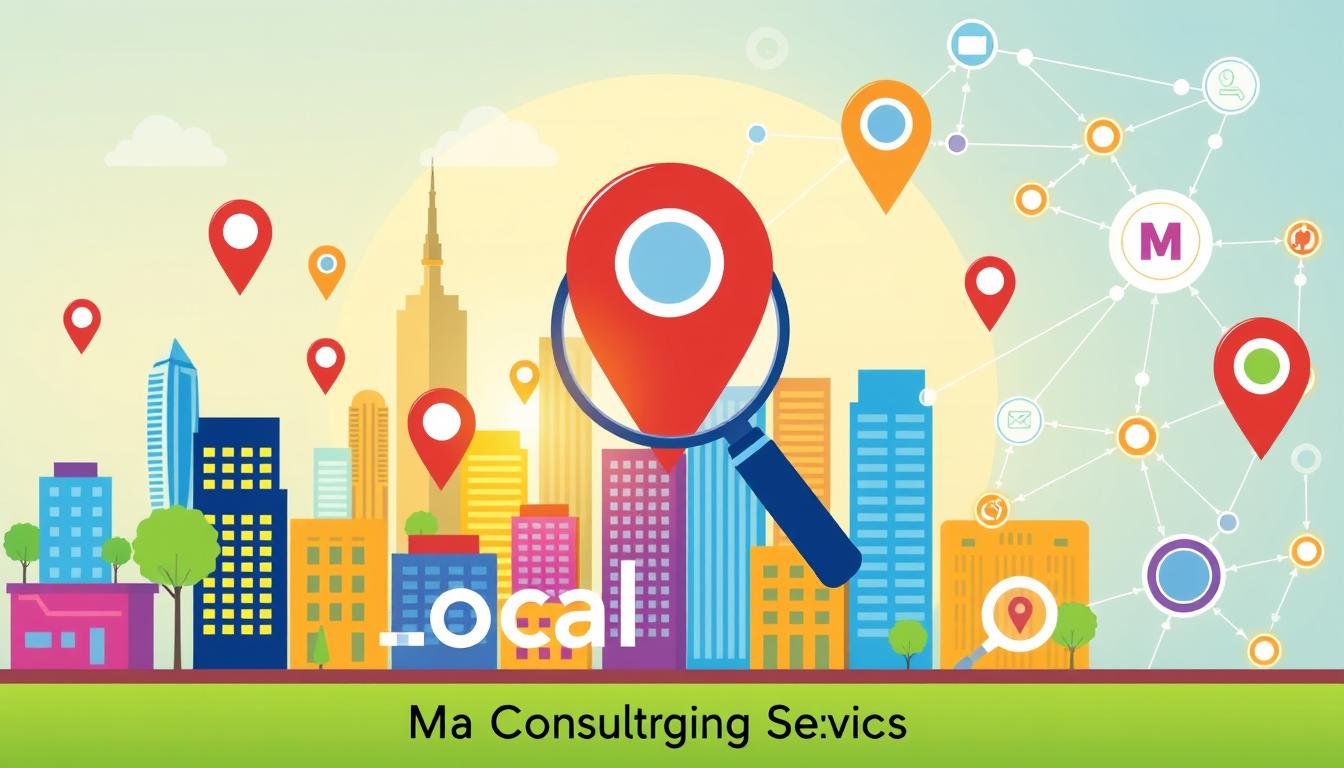
Welcome to the world of local search engine optimization! This guide will help you understand key terms and concepts. It’s perfect for boosting your business’s online presence. Whether you’re new to geo-targeting or want to improve your local citations, this glossary has the basics you need.
Local SEO is key for businesses wanting to attract nearby customers. By knowing these terms, you’ll improve your visibility in local search results. This helps you connect with your target audience better.
We’ll cover the basics of a successful local SEO strategy. You’ll learn how to use tools like Google My Business to stand out in your local market. This will help drive more foot traffic to your business.
Key Takeaways
- Local SEO focuses on optimizing your online presence for specific geographic areas
- Google My Business is a crucial tool for local search visibility
- Consistent NAP (Name, Address, Phone) information is vital across all platforms
- Local citations help build trust and improve search rankings
- Customer reviews play a significant role in local SEO success
- Geo-targeting helps businesses reach their local audience more effectively
- Regular monitoring and updating of your local SEO strategy is essential
Understanding Local SEO
Local SEO is key for businesses aiming at local customers. It makes your online presence show up in local searches. This helps nearby customers find you easily.
What is Local SEO?
Local SEO means making your online stuff better for location-based searches. You need to optimize your website and Google Business Profile with local info. Finding the right local keywords is also important.
Importance of Local SEO for Your Business
Local SEO is very important. Here are some stats:
- 46% of all Google searches have local intent
- 76% of people who search for something nearby on their smartphone visit a related business within a day
- 29% of Google search results contain a local pack
These numbers show how local SEO can boost your business. A good local SEO audit can help you improve your online presence.
How Local SEO Differs from Traditional SEO
Local SEO is different from traditional SEO. Traditional SEO aims for overall visibility. Local SEO focuses on location-based factors. Here’s what sets them apart:
| Local SEO | Traditional SEO |
|---|---|
| Emphasis on Google Business Profile | Focus on website optimization |
| Location-specific keywords | Broader keyword targeting |
| Local citations and directories | Backlinks from various sources |
| Local content optimization | General content creation |
Knowing these differences is key for a good local SEO plan. Focus on local content and keep your business info up to date. This will help you show up in local searches and attract more customers.
Key Terms in Local SEO
Understanding local SEO terms is key for businesses wanting to be seen online. Let’s look at some important concepts for a good local SEO strategy.
Google My Business
Google My Business (GMB) is a free tool for managing your business on Google Search and Maps. You can update your info, reply to reviews, and share updates. A good GMB listing can really help your local search rankings.

NAP Consistency
NAP stands for Name, Address, and Phone number. Keeping your NAP info the same everywhere online is called NAP consistency. This shows search engines your business is real and trustworthy, helping your local search rankings.
Local Backlinks
Local backlinks are links from local websites to yours. They help show your local authority and credibility. Links from trusted sites mean you’re seen as trustworthy and relevant in local SEO, helping your rankings.
Citations
Citations are mentions of your business NAP info on other sites, directories, or platforms. They’re key in local SEO because they:
- Boost credibility
- Help your local search rankings
- Make sure your business info is the same everywhere
Data aggregators collect and share this info, making it crucial for local search visibility.
| Local SEO Term | Impact on SEO | Importance |
|---|---|---|
| Google My Business | Improves local search visibility | High |
| NAP Consistency | Enhances trust and credibility | Critical |
| Local Backlinks | Boosts local authority | Significant |
| Citations | Increases local search rankings | Essential |
By getting to know these key terms and using them well, you can really boost your local SEO. This will help your business show up more online.
Implementing Local SEO Strategies
Local SEO is key for businesses wanting to reach nearby customers. With 46% of searches having local intent, it’s vital to use good strategies. Let’s look at the main parts of local SEO.
Keyword Research for Local SEO
Begin with deep local keyword research. Use long-tail keywords that include your location and services. This draws in the right traffic and boosts your search rankings.
Optimizing Your Google My Business Listing
Your Google My Business profile is essential for local SEO. Make sure all details are correct and current. Add great photos and reply quickly to reviews. A well-optimized listing can greatly increase your local search visibility.
The Role of Customer Reviews
Customer reviews are very important for local SEO. Good reviews can improve your local search rankings. Google shows star ratings in search results. Ask happy customers to leave reviews to get more positive feedback.
Measuring Local SEO Success
Use analytics tools to track your local SEO efforts. Look at website traffic, engagement, and conversions from local searches. Remember, local SEO is a continuous process that needs regular updates for the best results. Businesses in less competitive areas might see results quickly, while those in more competitive areas might take months.




